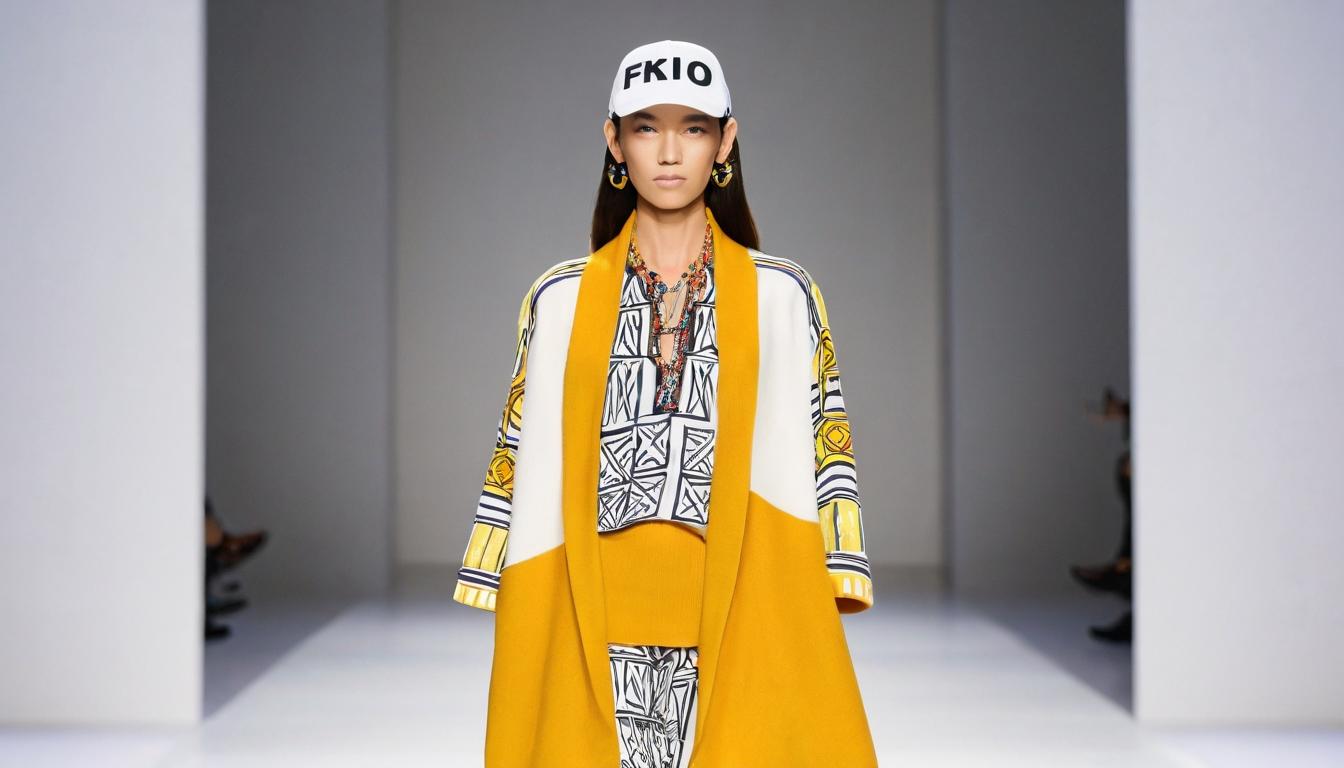In the dimly lit backrooms of Parisian ateliers and the buzzing studios of Seoul's underground music scene, a quiet revolution is unfolding. Fashion and music, those twin pillars of cultural expression, are no longer just collaborating—they're merging into a singular force that's redefining how we experience identity in the digital age. The boundaries between what we wear and what we hear are dissolving, creating a new landscape where aesthetics aren't just seen but felt through every sense.
Across the global fashion ecosystem, designers are no longer treating music as mere runway accompaniment. Instead, they're building entire collections around sonic identities, creating immersive experiences that blur the lines between auditory and visual storytelling. In London, emerging designers are collaborating directly with electronic musicians to develop signature sounds that become as integral to their brand as their color palettes. These aren't just background tracks—they're emotional landscapes that transform how we perceive fabric, cut, and silhouette.
The phenomenon extends beyond the runway into the very fabric of how fashion houses operate. Major luxury brands are now employing full-time music directors, curators who work alongside creative directors to ensure every collection has its own distinct sonic fingerprint. These professionals aren't just selecting songs—they're commissioning original compositions, developing sound installations for retail spaces, and creating audio identities that travel with the brand across digital platforms. The result is a multi-sensory experience that engages customers on levels traditional marketing never could.
Meanwhile, musicians are becoming the new fashion designers in everything but name. From K-pop idols launching their own streetwear lines to hip-hop artists developing luxury collaborations, the creative energy is flowing both ways. These artist-led fashion ventures often outperform traditional designer collections, tapping into fan communities that treat clothing as tangible extensions of musical fandom. The merchandise table has evolved from simple t-shirts to full-scale fashion collections that sell out within minutes of release.
Technology is accelerating this convergence in unexpected ways. Digital fashion shows now incorporate spatial audio that makes viewers feel physically present in the venue, while augmented reality filters allow users to 'try on' outfits while listening to the designer's curated playlist. Social media platforms have become testing grounds for these hybrid experiences, with TikTok creators seamlessly blending fashion hauls with music discovery in content that feels organic rather than commercial.
The economic implications are staggering. Fashion-music collaborations are generating billions in revenue, but more importantly, they're creating new business models that challenge traditional industry structures. Limited-edition drops that combine exclusive tracks with designer pieces create scarcity and demand in ways that neither industry could achieve alone. These partnerships are proving particularly effective at reaching Gen Z and younger millennials, who increasingly reject the siloed approach of previous generations.
Cultural critics are taking note of how this fusion is reshaping identity formation. For younger consumers, musical taste and fashion choices are no longer separate aspects of self-expression—they're integrated components of personal branding. The rise of 'aesthetic tribes' that combine specific music genres with distinct fashion styles demonstrates how deeply these forms have intertwined. From hyperpop's neon-drenched maximalism to ambient's minimalist elegance, the visual and auditory are becoming inseparable.
This convergence is also challenging traditional notions of authenticity. When a luxury fashion house collaborates with an underground musician, questions arise about cultural appropriation versus genuine partnership. The most successful collaborations are those that feel organic rather than calculated, where both parties bring equal creative energy to the project. The failures—and there have been many—serve as cautionary tales about what happens when the connection feels forced or purely commercial.
Looking forward, the most exciting developments may come from regions traditionally overlooked by Western fashion capitals. African designers are blending traditional textiles with contemporary Afrobeat sounds, creating collections that feel both rooted and forward-looking. Similarly, Latin American creators are merging regional musical traditions with cutting-edge fashion in ways that challenge Eurocentric definitions of luxury.
The environmental impact of this convergence deserves attention too. As fast fashion struggles with sustainability concerns, the music industry's move toward digital distribution offers lessons in dematerialization. Some forward-thinking brands are exploring how digital fashion—outfits that exist only online—can pair with streaming music to create sustainable forms of self-expression that don't require physical production.
What's clear is that we're witnessing more than a trend—we're seeing the emergence of a new cultural language. One where the rhythm of a bassline influences the drape of a dress, where the texture of a fabric echoes the timbre of a voice. As these forms continue to merge, they're creating richer, more complex ways for people to express who they are and who they aspire to become. The future of self-expression isn't just about what we wear or what we listen to—it's about how these elements combine to tell the stories of our lives.
The sonic revolution reshaping fashion's identity

